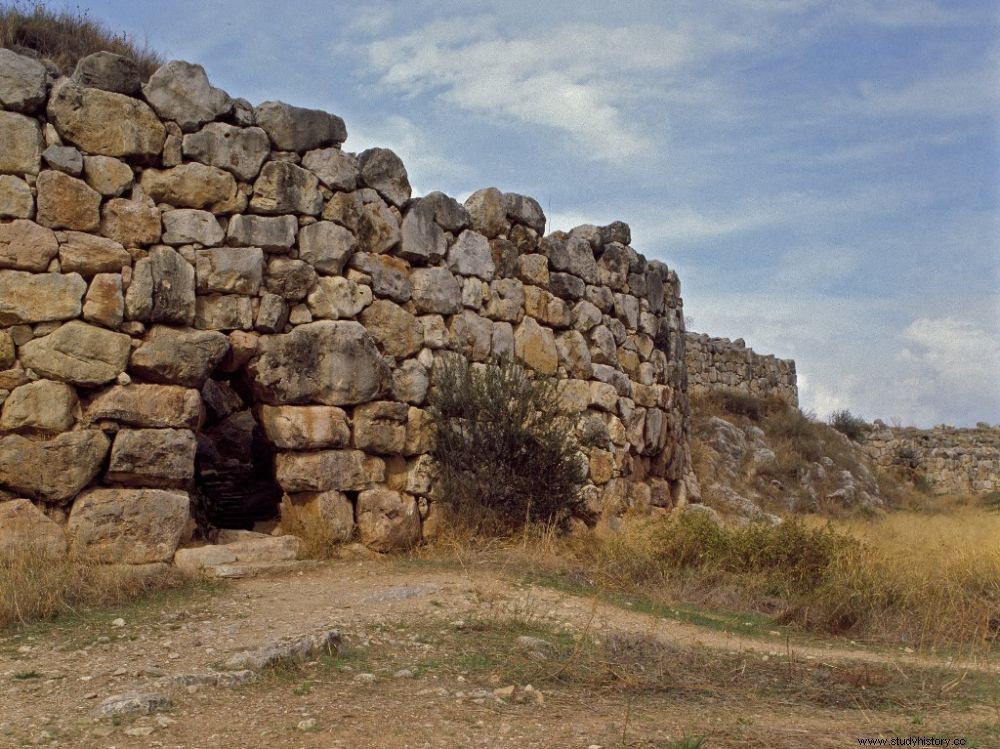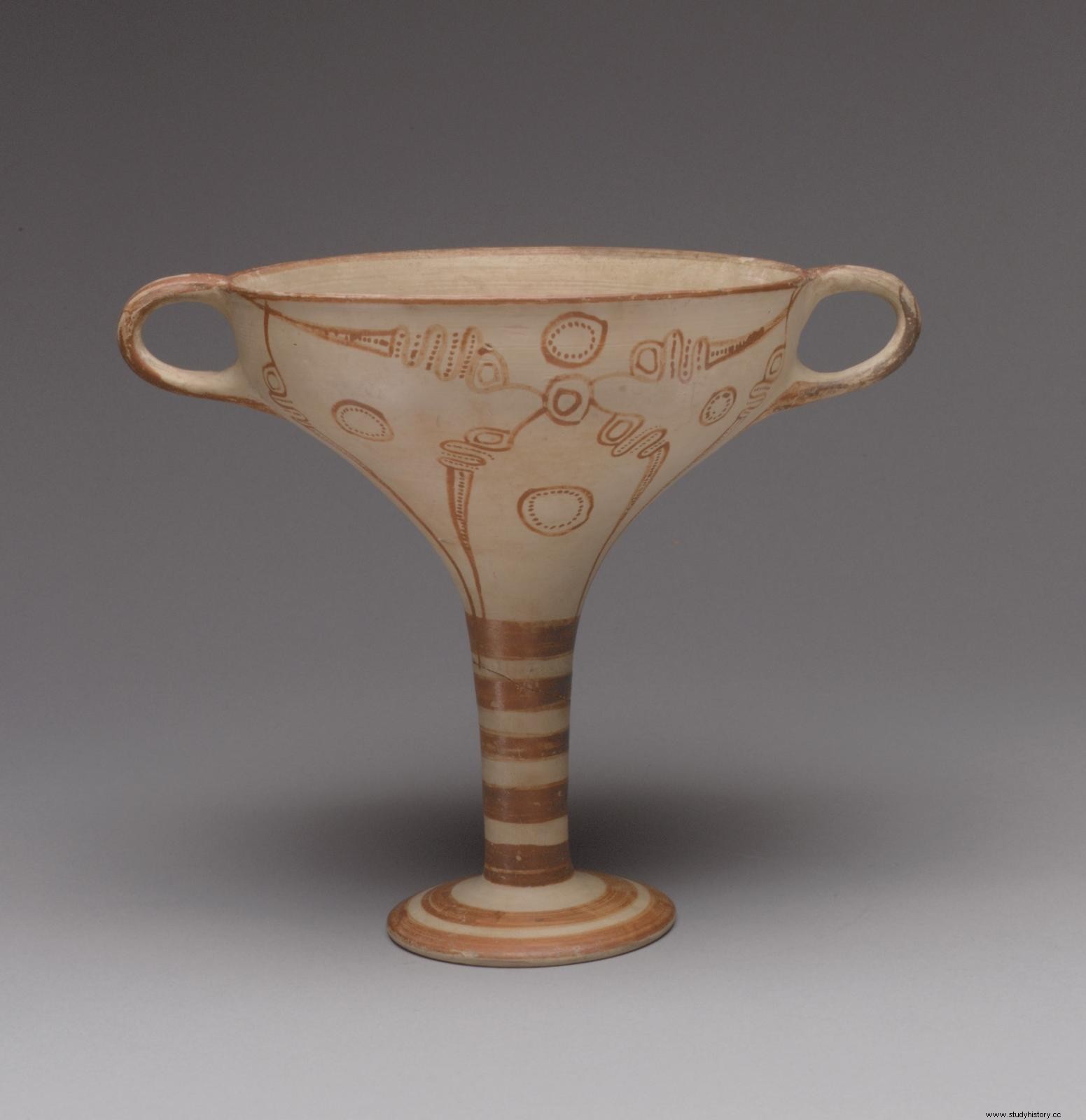For a long time, archaeologists have wondered how the Mycenaean civilization could have produced the countless pottery found throughout the Mediterranean world. According to a recent study, this would be thanks to the systematic use of lignite as fuel. A surprising explanation, which indicates that lignite was mined in Greece a thousand years earlier than previously thought.

Mycenaean art:western staircase giving access to the Mycenaean citadel, city of Tiryns, around 1200 BC, Greece
3000 years before playing a central role in the industrial revolution of the modern era, coal, and more precisely lignite, would have contributed to the development of the Mycenaean civilization in Bronze Age Greece. The study published in Scientific Reports which has just demonstrated this provides the oldest proof to date of the exploitation and use of lignite in Europe.
Lignite was mined by the Mycenaeans in the Bronze Age
The Mycenaean civilization that developed in southern Greece and Crete between 1600 and 1100 BCE was based on a palatial administration whose power was reflected not only in its ability to conquer territories, but also in its mastery of artisanal techniques which enabled it to establish its economic power. If we know above all the funerary masterpieces, such as the mask in gold leaf called "of Agamemnon", Mycenae and the palatial complexes which were connected to it are also at the origin of a mass production of high quality ceramic and bronze objects. As an international team of researchers led by archaeologist Philipp Stockhammer of the Ludwig-Maximilians-University in Munich (Germany) is now showing, such large-scale production may not have been possible a long time ago. than 3,000 years thanks to the systematic use of lignite to supply the firing and melting furnaces of multiple workshops. This is the oldest evidence of lignite mining and use in Europe.
Dental tartar, a real gold mine
This finding is a real surprise to the researchers. Firstly because their study initially focused on Eastern Mediterranean cooking practices and fuel supply during the 2 e millennium BC. However, as Philippe Stockhammer recounts in a press release, by examining 80 samples of dental calculus taken from 67 individuals found at eight key sites in the region, they "found that in this dental calculus were not only encrusted the microresidues, fats and proteins of each meal […], but also all the soot and residual gases that had entered the mouth by inhalation ". Tartar, which fossilizes during the person's lifetime, therefore proves to be a real gold mine for archaeologists, allowing them to reconstruct food, diseases and even the components of the air that was breathed.
A surprising fuel
The analysis of the chemical composition of this soot has reserved a second surprise for the researchers. As they expected, they first identified the chemical signature of burning coniferous wood:black pine (Pinus nigra ), stone pine (Pinus pinea ) and Kefalonia fir (Abies cephalonica ), which are the most widespread species in this Mediterranean area. They also, but to a lesser extent, found traces of hardwoods, such as oak and olive, and dried manure, which is still used today in areas where it is hot and dry and where there is a lack of Of wood. But in half of the people from two specific places – the Mycenaean palace of Tiryns, in the Peloponnese, and the Cretan port of Chania – another much more surprising substance was also present:lignite. Its signal, however, corresponds to a particular use of the fuel, which differs from the use of wood and manure in the daily domestic context – for cooking, heating or lighting.
Lignite was used to fuel artisan ovens
Researchers have indeed good reason to believe that lignite was burned in cooking and smelting furnaces for the manufacture of pottery and metals. Installations of this type have been found at the two sites of Tiryns and Chania, which were then major port and palatial centers of the Aegean. In addition, although it is difficult to say with certainty what the occupation was of the people whose teeth contained these traces of lignite, they mostly showed signs of intense physical work, rheumatism or chronic pneumonia. "We can imagine that they were craftsmen, men and women who worked in any case near lignite-fired hearths ", explains Philipp Stockhammer.
The oldest evidence of the use of lignite in European antiquity
It was thought until now that coal was used in Europe only from classical Greece. The scholar Theophrastus (371-288 BC) provided the first written mention of it in his treatise On the Stones . He describes the different kinds of coal and their uses, specifying that lignite is particularly useful for metallurgy. But we now know, thanks to a recently published study, that lignite was used in China around 1600 BC. J.-C., and the traces detected among the inhabitants of Tiryns indicate that its exploitation began in Greece at the latest in the 13 e century before our era, this period corresponding to the apogee of the Mycenaean palaces of the city. The inhabitants of Chania with traces of lignite lived for their part a little earlier, in the 14 e and 13 th centuries; the port was then under Mycenaean control following the conquest of Crete by troops from the continent in the 15 th century. They therefore contain the first indications of the use of lignite in Europe.
Fire mastery
If the Mycenaean civilization resorted to lignite, it is probably because wood had already become a scarce resource, the regions around the Mycenaean castles being densely populated and largely deforested. According to the researchers, lignite thus represented an alternative that was not only more useful, but constitutive of Mycenaean power. Because "artisanal production requiring intense heat required procuring enough fuel, and lignite was particularly useful because of its higher energy density and because the temperature was easier to control ", explains the study. This type of fuel thus implies a technical mastery of fire which determined the development of more sophisticated cooking methods and favored the molding of metals.

Terracotta footed cup (or kylix) decorated with murex, ca. 1400-1300 BC. AD Improved cooking methods made possible this type of long-stemmed cup, which from then on became the standard shape of the drinking cup in much of the Mycenaean world. © Metropolitan Museum of Arts (CC0 1.0)
Mass production that establishes the power of Mycenae
Mycenaean pottery has been unearthed in an area stretching from Spain to Syria, a sign that the early use of lignite enabled the Mycenaeans to ensure mass production, almost industrial, of objects in ceramics and bronze (vessels, vases, swords, etc.) mainly intended for export. The researchers estimate that tens of thousands of very high quality objects were produced each year in the workshops, and that this production was only made possible by the use of lignite when the wood resources were depleted. Another proof of its importance:the analysis of its chemical composition indicates that the fuel used in Tiryns was undoubtedly extracted from a site close to Olympia, which was then a little more than 150 km to the west. The considerable effort that this provisioning must have represented shows once again how much the Mycenaean civilization relied on an implacable organization.
